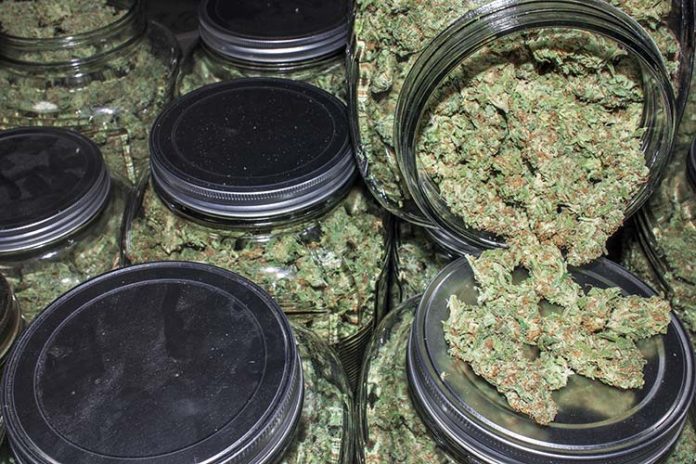Big changes are probably headed the marijuana industry’s way in 2018. After years of speculating on which country would follow in the footsteps of Uruguay and legalize recreational cannabis, Canada looks to be next in line.
Right now, Canada’s parliament is analyzing a bill that’d make cannabis legal for adult purchase and consumption by this summer. With conservatives representing a clear minority in parliament, and a two-year tax-sharing agreement in place that’s designed to allow provinces to receive three-quarters of all excise tax revenue generated from the sale of cannabis, legalization is looking more likely than ever. If the Senate votes in favor of the measure on June 7, it’s expected to be signed into law very shortly thereafter, making either August or September the month where legal recreational cannabis sales will commence.
The expectation of Canadian recreational legalization sets off a firestorm of expansion
What does legal weed mean for Canada? Aside from becoming the most prominent marijuana market in the world, it would add an estimated $5 billion in annual revenue, if not more. Let’s not also forget that Canada is among a small group of countries that’ve legalized the export of dried cannabis to markets that’ve legalized medical weed. With most of Europe having virtually no domestic growing capacity, they’ll be leaning on countries like Canada to meet their near- and intermediate-term medical cannabis supply demands.
This strong likelihood of legalization has spurred massive investment in new greenhouses and growing facilities in Canada. Cannabis growers have been generating capital via bought-deal offerings at a breakneck pace in the hope of securing as much market share as possible. For instance, Canopy Growth Corp. already has seven licensed facilities spanning an aggregate 665,000 square feet, and is currently constructing or developing greenhouse facilities on 3.7 million square feet of land in British Columbia. It could very well be producing north of 300,000 kilograms per year.
Not too far behind are Aurora Cannabis and Aphria, which in their latest operating results guided to a respective annual production of 240,000 kilograms to 270,000 kilograms, and 230,000 kilograms.
In total, Health Canada has handed out 91 cultivation and/or sales licenses throughout Canada, and the aforementioned three names could account for around 800,000 kilograms of dried cannabis equivalent production all by themselves.
Oversupply is a genuine concern
Now, here’s the issue: demand throughout all of Canada may only total 800,000 kilograms. Admittedly, no one has any precise clue what demand will be like given that no developed country has ever legalized cannabis for adult consumption before. However, the general consensus among government reports and analysts is that annual demand is expected to be right around 800,000 kilograms, give or take 50,000 kilograms. If that’s the case, the current production totals suggest the possibility of the market being oversupplied by 600,000 kilograms to as much as 1,000,000 kilograms of cannabis by 2020. Some of this domestic excess will be absorbed by medical weed exports, but it’s unlikely that all of it will.
What happens with an oversupply scenario is also anyone’s guess, but the probable response is a serious decline in marijuana’s per-gram price. For large-scale growing operations, such as those mentioned above, a large decline in per-gram cannabis prices would be unpleasant, but far from the end of the world. You see, these growers will have scaled their operations and instituted cost-efficient greenhouse measures to likely push their per-gram growing costs below $1. Even if cannabis prices were halved from oversupply, these larger players would probably be fine until smaller operations reduce production or go belly-up.
However, one marijuana stock wouldn’t nearly be so lucky if per-gram cannabis prices plunged: Cannabis Wheaton Income Corp.
Here’s why oversupply could be disastrous for Cannabis Wheaton
Cannabis Wheaton is the first publicly traded royalty business in the cannabis space. Since most marijuana companies have difficulty securing financing to expand their growing capacity, Cannabis Wheaton steps in and provides that capital. In return, Cannabis Wheaton lays claim to a percentage of the annual production of its licensed partners at a well-below market rate. The company then takes the cannabis it receives and sells it for market rates, thus pocketing the difference as its profit. The company’s projected internal rate of return of at least 60% on its more than one dozen deals could give it the best margins in the industry.
If weed oversupply has a demonstrably negative impact on per-gram cannabis prices, Cannabis Wheaton will feel it twofold. First, no pot stock is more directly affected by average cannabis price fluctuations than a royalty-based model. This means it would probably be the first to benefit if cannabis prices rise, and the first to feel the pinch if they fell, because its margins are directly tied to the average per-gram price of pot.
Second, whereas economies of scale will push costs lower for the largest growers over time, Cannabis Wheaton’s costs are relatively fixed, if not moving ever-so-slightly higher to account for inflation over time. Short of reducing employee wages and staff, there’s little Cannabis Wheaton can do to lower its costs beyond say $2 per gram. Admittedly, average Canadian cannabis prices would have to fall about 70% to reach $2 per gram, but that’s not completely out of the question if the country is dealing with 1,000,000 kilograms in oversupply.
It’s once again worth reinforcing here that we just don’t have a lot of answers yet, and we won’t for many more months. But if an oversupply scenario does materialize, and the oversupply isn’t negligible, Cannabis Wheaton and its relatively fixed-cost model could take it on the chin.














